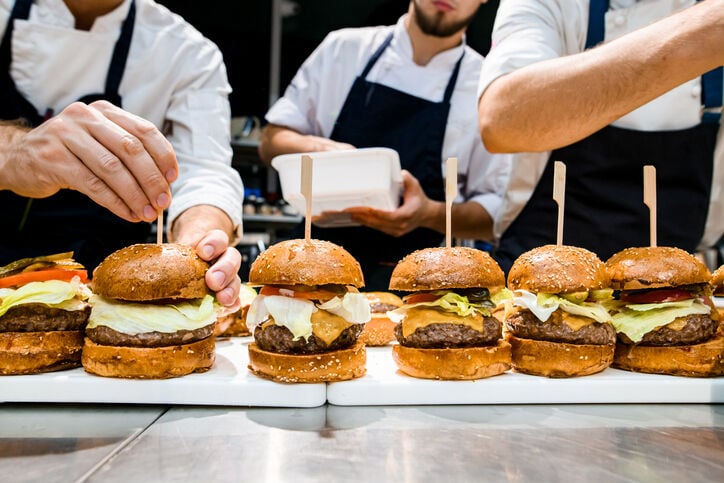Workers at the bottom of the Arizona wage scale will be legally entitled to a pay raise of $42 a week beginning in January.
And you can credit — or blame — inflation.
New figures reported Tuesday by the Bureau of Labor Statistics show that costs for urban consumers, as measured by the Consumer Price Index, rose 8.3% between August 2021 and last month.
That’s key because laws approved by Arizona voters in 2006 and again in 2016 require annual inflation adjustments to the minimum wage, based on those August annual figures.
Rounded to the nearest nickel, as required by statute, that translates to $1.05 an hour raise coming Jan. 1 on top of the current $12.80 minimum wage.
A formal announcement won’t come until Thursday, when the state Industrial Commission, which has purview over the annual adjustment, has its regular meeting.
Will supercede Tucson’s minimum
The latest state minimum wage increase comes after Tucsonans voted last year to impose their own $15-an-hour minimum, in steps, by 2025.
The city’s minimum started at $13 on April 1, goes to $13.50 in 2023 and to $14.25 in 2024 before hitting the target. After that, as with the state minimum, adjustments would be made based on inflation.
The Tucson ordinance, though, is designed so that workers get the benefit of whichever calculation is more generous. So any time the state figure is higher — as it will be in January — that becomes the minimum for Tucsonans, as well.
Meanwhile, due to the cost of living increase, the city of Flagstaff will increase its minimum wage to $16.80 per hour starting Jan. 1, a raise of $1.30, under a law approved by voters there in 2016.
Businesses having to pay more anyway
Statewide, even with the big increase and the new $13.85 wage floor, the automatic boost being precipitated by Tuesday’s BLS data may have little practical effect on what many companies pay their Arizona workers, however.
That’s because staff-starved businesses are finding they can no longer offer the bare minimum allowed by law to attract and retain employees. Those specifically include the restaurant and fast food industry which fought hard — and unsuccessfully — to convince voters not to adopt a state minimum wage.
Had those businesses been successful with voters, Arizona would have the same $7.25 an hour minimum wage that has been federal law now since 2009.
But Steve Chucri, president of the Arizona Restaurant Association, said neither the federal wage nor even the state minimum wage is particularly relevant right now when members of his association are hiring.
“Our ‘back of the house’ is making more money than ever before due to labor shortages and a whole host of reasons,’’ he said. “We’re well above the minimum wage in the back of the house.’’
That is borne out by a report from the state Office of Economic Opportunity.
For 2021, the most recent data available, fast food cooks already were earning an average of $13.58 an hour. The figure for cooks at more traditional restaurants was $15.93. Dishwashers were being paid an average of $14.08 an hour.
But the state-mandated increase could help those in the front of the house, meaning servers, Chucri said. The voter-approved laws do allow their wages to be set $3 an hour below the state minimum — but that is conditional on proof their tips are making up the difference.
Where the higher wage may hurt, said Chucri, is down the road, after inflation has cooled and after there is better alignment between the number of open jobs and the number of people who want one.
Under other circumstances, he said, that could allow employers to offer less.
Only thing is, the state minimum wage law is a one-way ratchet: It can only go up. Even if there were deflation, there is no provision for it to ever go down.
Restaurants are preparing to limit labor costs. “It’s not necessarily job elimination,’’ Chucri said.
Some fast-food and even casual dining spots direct customers to kiosks to place their orders and pay.
“And in the back of the house, we’re also seeing the introduction of robotic arms that are working in certain parts of the kitchen, whether it’s turning over fries or flipping burgers, whatever the case might be,’’ he said.
Inflation in fuel, food costs and more
Arizona voters mandated in 2006 that the state have its own minimum wage not tied to the federal figure.
What’s driving this year’s inflation figure, not surprisingly, is the cost of fuel. There has been a sharp drop recently, including a 10.6% reduction just last month. But even with that, BLS reports that gasoline prices are up 25.6% over a year earlier.
There also has been a 33% increase in the cost of piped gas, versus a 15.8% hike in electricity costs.
And grocery prices are up 13.5% year over year. But the cost of eating out has risen by just 8.0%.
The other big increase has been in the price of cars and trucks, up 10.1% for new vehicles and 7.8% for used.
Shelter prices, including rent and what the BLS calls the owners’ equivalent rent of residences, are up 6.2% nationally.
BLS also released separate data Tuesday for the Phoenix metro area — Maricopa and Pinal counties — that showed some marked differences with the national figures.
Most notably, annual inflation is up 13.0% compared with 8.3% nationally. That is largely driven by a 17.1% year-over-year increase in housing costs, a reflection of sharply higher home prices and rents.





